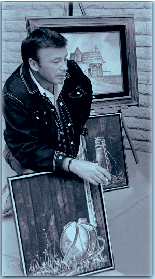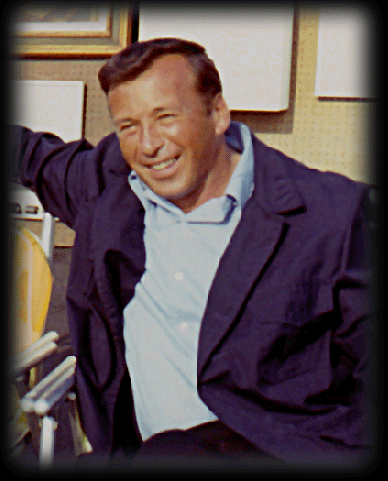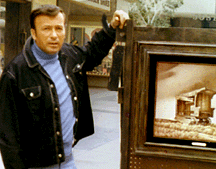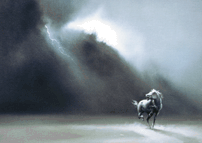Bodner's
Collectors
include:
• Julie Andrews
• Ginger Rogers
• Don Adams
• Burt Reynolds
• Jerry Dunphy
• Dennis Weaver
• Shecky Greene
• Robert Taylor
• George Kennedy
• Jane Withers
• Jack Palance
• Bob Newhart
• Slim Pickens
• Barry Goldwater, Jr
• June Havoc
• Connie Stevens

Joseph Bodner’s first inspiration to paint came during World War II, where he painted various insignias on Air Force Jackets and on the noses of now vintage Bombers -- “the pin-up types,” he used to say. He flew many missions as a combat crew member in the Army Air Force. It was divine fate and an ear infection that kept Joe in sick bay on the day his buddies were shot down, leaving only one other survivor.
After the war, he studied at the Art Center in Los Angeles, specializing in fine art and illustration. Joseph’s love of flying deeply influenced the heroic, outstretched skies that dominate the majority of his canvas space regardless of the subject matter. He worked for a time at Hanna and Barbera in their cartoon department and also at M.G.M studios.
Joseph was always fascinated with the wide open spaces of the California and Nevada deserts. He would quietly go and observe the remarkable effects of light on this hypnotic wilderness and he withdrew there frequently to escape everyday conflicts and tensions of the city. He participated in a three man exhibition at the California Museum of Science and Industry entitled, “The Vanishing West,” in the late 60's with cowboy Slim Pickens. He was dedicated to California's disappearing Old West.
Bodner at an outdoor art exhibition in Century City, California in the mid 1970's.
Joseph appreciated the simplicity of the monochromatic palette. He believed, as many old movie lovers do, that a minimal palette affords the viewer more time to concentrate on the subject matter while minimizing the distractions he felt too much color brought to his work.
Bodner rarely did any portraits. He did, however, love horses. He painted a portrait of T.V. Lark, with jockey Willie Shoemaker up, Azure’s Orphan and racing jockey, Johnny Longden. A big fan of English actress Julie Andrews, Joe surprised her with a portrait while she was working on the film, “Thoroughly Modern Millie.” He painted an album cover for a classical music version of “The Tempest,” with a dramatic depiction of a frightened wild horse running in the desert being chased by lightning. (see image below)
When Joe was approached to create a painting for the film, “Jonathan Livingston Seagull,” he didn’t realize then how much it would change his life. The painting, entitled, “The Ressurection of Jonathan,” was displayed at the movie’s premiere opening. It was during this project that Joe left his traditional desert browns for tranquil ocean blues and broad cerulean skies. The painting (later given to actor Jimmy Stewart, the original narrator of the film) generated a very new and quite popular form of expression for Joe. The writings of Jonathan’s author, Richard Bach (also an aviator), sparked Joseph’s interest in extending his painting style from his familial westerns to include dramatic pictorials of seagulls and mythological scenes depicting Pegasus, centaurs, and unicorns.
Joe was always intersted in telling a good story. The new style he developed combined many of his previous elements using a monochromatic pallette with his finest subject since the old west - the white horse. Joe loved the strength and majesty of horses. He loved their dynamic and romantic movements. He loved to depicted them in their finest moments - when they were free - when they thundered through the deserts, forests and beaches Joe created for them - where the observer might look but dare not touch, dare not disturb their mystery.
As you observe each work of Joseph Bodner, you will see his respect for history and his tremendous love of nature. His subjects were often deliberately painted smaller in his compositions to emphasize the way Joseph felt about man’s relationship to his environment. Acutely observing all, Joseph wanted his viewer’s to also be conscious of their own place in the world. He was passionate about his belief's and was, for the most part, a loner - not too unusual for an artist.
In his westerns, he chose to express the dramatic truth of a dying era. His later works enhanced that same spiritual beauty while remaining faithful to Joseph’s own vision.



